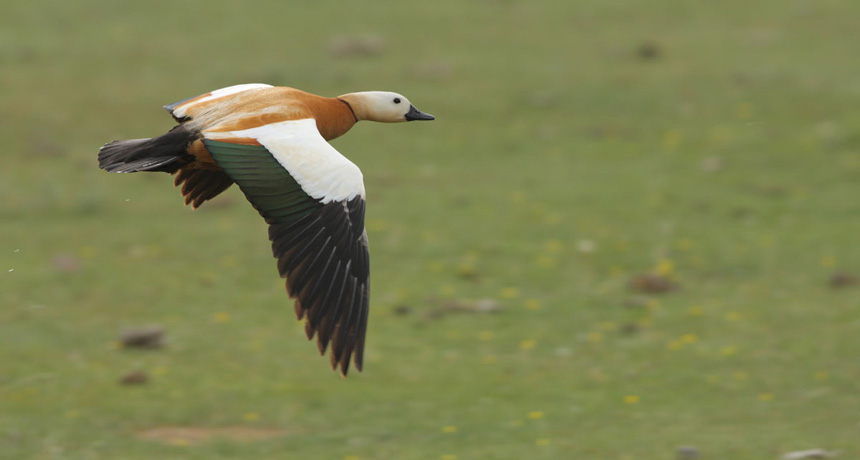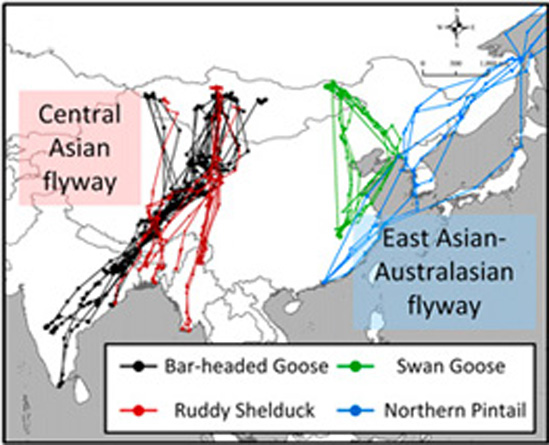Bird flu follows avian flyways
Deadly H5N1 influenza travels with migrating wildfowl

ON THE WING Ruddy shelducks (Tadorna ferruginea) and other wild birds may spread the deadly H5N1 virus along their migration routes in Asia.
Courtesy of Chao Zhao







